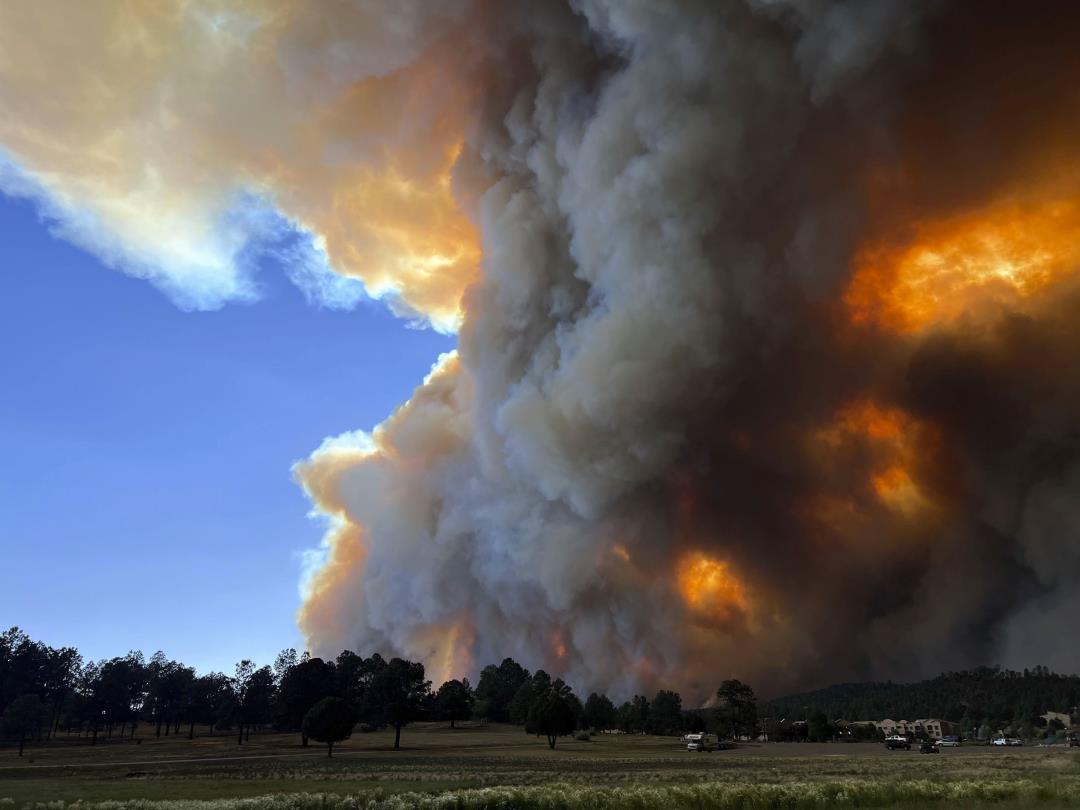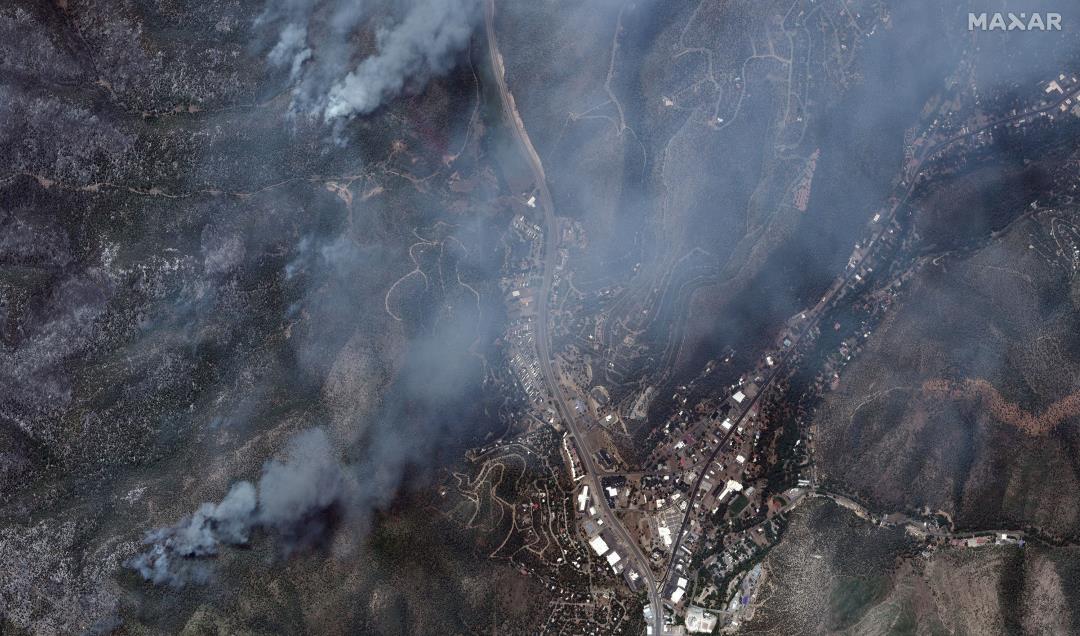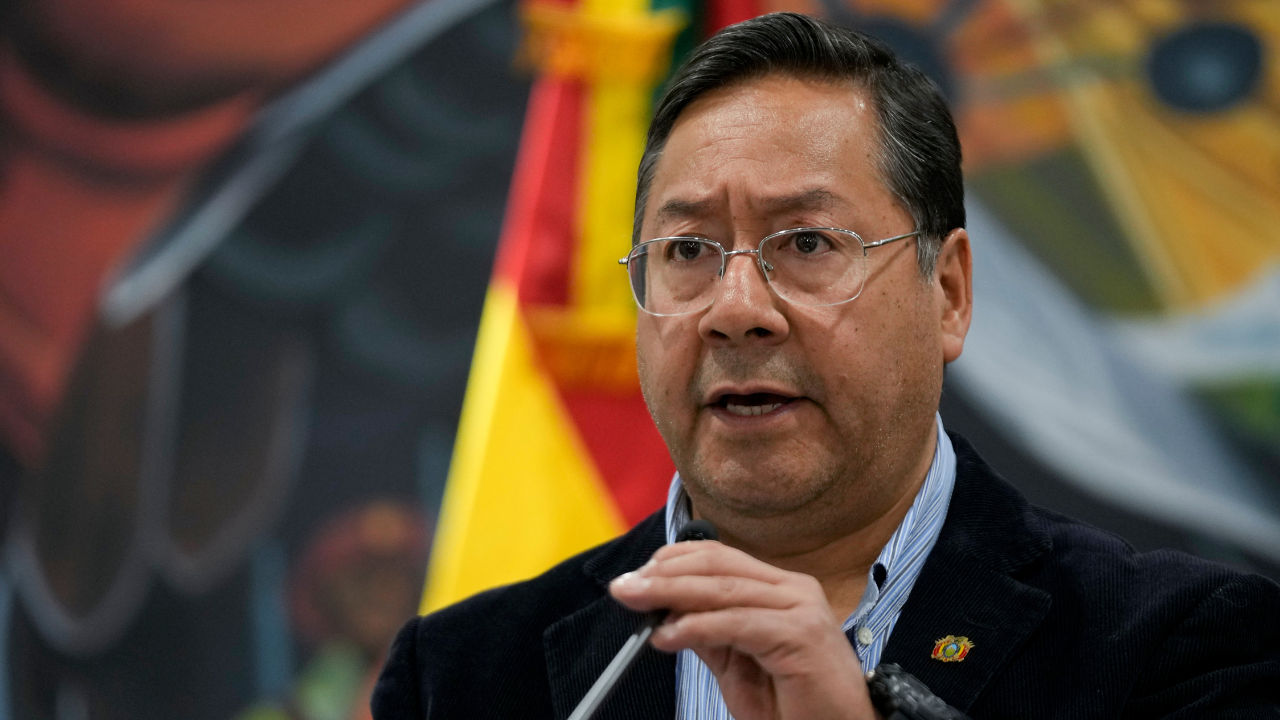California
Why California is having its best wildfire season in 25 years

It’s nearly August, but one familiar summer trend has been very scarce this year: wildfires.
California is off to its slowest start to fire season in 25 years.
A state traumatized by huge fires over the past decade that have burned millions of acres — killing more than 200 people, and generating choking smoke and apocalyptic orange skies — has seen almost no major fire activity so far in 2023.
As of Thursday, just 24,229 acres had burned in California since Jan. 1, according to the National Interagency Fire Center. That’s 82% less than the state’s 10-year average and is the lowest of any year since 1998.
Only four structures have burned statewide in wildfires so far this year and there have been no fatalities, reports Cal Fire, the state’s main firefighting agency. By comparison, one fire in July 2018, the Carr Fire near Redding, destroyed 1,614 structures and killed eight people, including three firefighters.
The reason for the state’s good fortune now, experts say, is water. Lots of it.
“I was in the mountains this past week,” said Scott Stephens, a professor of wildland fire science at UC Berkeley. “Things are green. Streams are flowing. It’s still wet.”
While fire agencies often warn that extra rain can help fuel fire danger, an analysis of 30 years of rainfall and wildfire records by the Bay Area News Group shows that wildfire risk in California is much higher after dry winters, and lower after wet winters like this year’s.
Since 1993, four of the five worst fire years measured by acres burned statewide occurred after drier-than-normal winters. Those were 2020, 2021, 2018 and 2008. The only one that followed a wet winter was in 2017, when fall rains came late in the season and power lines fell in winds, sparking the Wine Country fires in October, and the massive Thomas Fire in December in Ventura and Santa Barbara counties.

In contrast, all five of California’s mildest fire years over the past three decades happened after wet winters — 2010, 1995, 1998, 2011 and 2019. This past winter was similar. The statewide average rainfall was 140% of normal.
“My prediction has been that we are going to be below normal for wildfire this year,” said Craig Clements, director of the Fire Weather Research Laboratory at San Jose State University. “And that’s what we’re seeing right now.”
An onslaught of drenching atmospheric river storms this winter ended California’s three-year drought, filling reservoirs, causing flooding in some areas, and delivering the biggest Sierra Nevada snowpack in 40 years.
To be sure, big fires are still a possibility, fire scientists say. Dry lightning storms, like the state experienced in 2008 and 2020, or a rash of arson fires, or extreme heat waves with hot winds blowing from east to west, could spark big blazes, particularly in September and October, which typically are the most dangerous wildfire months in California.
“We aren’t out of the woods,” Clements said. “When we get to the fall, fuel moistures will be low again. If rains start late, or if we have a bunch of wind events, we could still have a big fire.”
Typically, if a winter was dry, fire officials will say that summer fire risk is high because the landscape is dry and primed to burn.
But if the winter was wetter-than-normal, they’ll regularly say that fire risk is also high because lots of grass has grown up, which provides fuel for fires.
“The abundant rain has produced tall grass and other vegetation that’s dried out already and is ready to burn,” said Cal Fire Chief Joe Tyler at a news conference June 29.
But every year doesn’t bring huge firestorms.
“The fire agencies say it’s always high fire danger,” said Jan Null, a meteorologist with Golden Gate Weather Services in Half Moon Bay, who helped compile the data. “If it’s wet, that equals bad. And if it’s dry it equals bad. That hurts their credibility. I think they want to make people aware of fires, which is part of their preparedness program. But all years don’t have the same risk. Summers following wet winters typically have fewer acres burned.”

While rainy winters do cause more grass to grow, fire scientists say they also keep moisture levels higher in soils, shrubs and trees longer into the summer. So when fires do start, they often don’t spread as fast as in dry years.
“Grass fires aren’t usually a big problem for Cal Fire,” Clements said. “They can get on grass fires really quickly, and retardant drops work well on them. The fact we have more grass isn’t going to make or break our fire season. What makes or breaks our fire season is the big fuels — the forests, the trees and the heavy shrubs.”
Right now, Clements said, moisture levels in shrubs, like manzanita and chamise, are higher than normal, running about one month ahead of average.
“If vegetation is wetter it’s harder to ignite,” Stephens said. “You get lower flame lengths, and fire doesn’t spread as fast. Try to start a campfire with wood that has been wet from rain. It’s hard.”
In addition, snow is still covering the ground across many areas in the Sierra Nevada, a rarity for July and August.
Skiers wearing shorts frolicked at Lake Tahoe on July 4th. Mammoth Mountain ski area in the Southern Sierra is open this weekend.

Because there has been so little fire activity in 2023, plenty of engines, firefighters, helicopters and planes have been available when fires have started.
On Monday, a blaze called the Wonder Fire began in brush and timber north of Redding. Cal Fire, the U.S. Forest Service and other agencies kept it to 162 acres. No homes burned and there were no injuries.
“Within an hour they had like eight air tankers there,” said Zeke Lunder, a fire analyst in Chico. “They can keep small fires fairly small as long as there isn’t a lot of competition for resources.”
Lunder, who has worked for the past 25 years developing fire mapping and fire behavior models, said that as the climate has warmed, some public officials and climate activists have given the incorrect message that every year is going to be catastrophic. But local weather conditions like wind, lightning, soil moisture and availability of firefighting resources are still key, he said.
“I don’t think you’ll find any firefighters who won’t say climate change isn’t changing the dynamics,” he said. “But it’s not predictable, and it’s not across the board.”
State firefighting officials say they welcome the trend this year. But they don’t want the public to become complacent.
“It’s been about as good as you could hope for,” said Isaac Sanchez, a Cal Fire battalion chief. “We want zero fires and zero acres. But if you are going to have to have fires you want them on the low side. And that’s what we’ve had.”
Until this weekend, the only fire of even moderate size this year so far in California was the Rabbit Fire, which burned 8,283 acres in Riverside County. It began July 14 and was contained a week later. No homes burned. By comparison, California’s two largest fires, the Dixie Fire in July 2021, and the August Complex Fire in August 2020, burned roughly 1 million acres each in rural Northern California.
On Saturday, two other new fires were burning, the 4,200-acre York Fire, in a remote area of the Mojave National Preserve near the Nevada state line, and the 2,200-acre Bonny Fire, near Aguanga in Riverside County.
“We’re happy with what we’ve experienced so far,” Sanchez said. “If we are able to keep this level of fire activity up through the rest of the year, we’ll be happy with that. But we are prepared for that not to be the case. We’re ready.”

California
Frustration over hidden fees in California ends July 1

SAN DIEGO (FOX 5/KUSI) – Come Monday, changes will be coming to California as a variety of new laws are set to go into effect, including one aimed at banning hidden fees.
“We need to know. We need to know what we’re paying for,” said Kelley Day.
Thanks to Senate Bill 478, consumers will know the price of a product or service from the start — not when they get the bill.
“I feel like it makes it fair for consumers in general. You get what you get. You’re seeing the price and then it makes it so no one can complain,” said Zoe Miller.
Also known as the honest pricing law or hidden fees statute, the bill paves the way for transparency. It applies to the sale of most goods and services including restaurants, hotels, event tickets and food delivery service.
“If consumers see a low price at the beginning, then they are more likely to make a commitment there and then once they’ve made the commitment, they’ll have to put up then with the higher price at the end. It’s kind of a bait and switch,” said Alan Gin, an economics professor at University of San Diego.
Gin says restaurants may be among the most worried to bake the total cost of fees and surcharge into the price of what’s on your plate.
“It’s the restaurant industry particularly that’s complaining about this and they may carve out legislation that says their fees would be OK if they display them prominently on the menu,” Gin added.
Lawmakers are currently contemplating that exemption for restaurants. The law already has exemptions for taxes and things like shipping and delivery charges.
California
California welcomes its newest city

A community of nearly 30,000 residents is set to become California’s newest city.
Mountain House in San Joaquin County will incorporate on July 1, several months after voters showed overwhelming support for cityhood.
•Video Above: Coverage of Mountain House cityhood vote (from March 2024)
Mountain House is in the southwestern part of the county, about 30 miles southwest of Stockton and 50 miles east of Oakland.
To celebrate cityhood, Mountain House announced officials are holding a commemoration ceremony as part of a Fourth of July celebration.
Mountain House is San Joaquin County’s eighth city and California’s 483rd city, as well as the state’s newest since 2011.
It has about 10,000 registered voters and is a growing community with about 28,000 residents.
On the same March ballot where voters opted for cityhood, they also decided on a proposed mayor and city council and determined how future elections would work.
A majority of voters decided on an “at-large” process to determine how city council members will be elected.
An “at-large” election means anyone who lives in the city could run for a city council seat, instead of using a system of districts with one member from each. In Mountain House, the candidates with the most votes will become city council members.
Prior to the cityhood vote, Mountain House was governed by an elected, five-member community services district board.
California
20th & Ryan Coogler’s Proximity Media Adapting ‘California Bear’ Novel From Gary Lennon & Duane Swierczynski

EXCLUSIVE: 20th has landed the rights to a feature adaptation of the New York Times bestselling novel California Bear from Duane Swierczynski. Gary Lennon will write the feature alongiside Swierczynski with Ryan Coogler’s Proximity Media producing, sources tell Deadline.
Swierczynski’s latest novel is a thriller that follows four unlikely vigilantes whose decision to take justice into their own hands pits them against the villain behind California’s coldest murder case.
California Bear is 20th’s first project with Proximity. Rashonda Joplin, 20th’s Director of Production, and Catherine Hughes, Creative Executive, will be shepherding the project. 20th’s Head of Literary Affairs, Clare Reeth was instrumental in bringing the book into the studio. Ryan Coogler, Zinzi Coogler, Sev Ohanian produce through their company, Proximity Media. Rebecca Cho will exec produce and oversee the project along with Hannah Levy for Proximity Media.
In March, Lennon extended his development deal with Lionsgate Television and was previously under an overall deal at Starz. Currently, he is the showrunner and executive producer of the Power spinoff series Power Book IV: Force continuing his work from Season 2 and is in production on the third and final installment of the Chicago-based crime drama. He was also executive producer of the mothership series for Starz which earned him two NAACP Image Awards. Additionally, he’s partnered with Lionsgate Television on P-Valley and Hightown for Starz and the hit Netflix series Orange Is the New Black. Lennon is represented by CAA, M88 and attorney Erik Hyman.
Swierczynski is the New York Times bestselling and two-time Edgar-nominated author of 15 novels including Expiration Date, Canary and the forthcoming California Bear, as well as the graphic novels Breakneck and Redhead. Along with James Patterson, he co-created the Audible Original The Guilty and co-wrote the private eye thriller Lion & Lamb. He’s also written more than 250 comic books including Deadpool, The Immortal Iron Fist, Punisher, Birds of Prey and Star Wars: Rogue One. His first short story collection, Lush & Other Tales of Boozy Mayhem, was recently published by Cimarron Street Books. Swierczynski is represented by Story Driven and McKuin, Frankel Whitehead.
Proximity Media’s film projects include two-time Academy Award-winning Judas and the Black Messiah, Space Jam: A New Legacy and Creed III which grossed over $275M theatrically. Upcoming, Proximity is currently in production on Ryan Coogler’s untitled event film for Warner Bros. starring Michael B. Jordan. It’s set for a March 2025 IMAX release. Additionally, the company is in post-production on Marvel’s Ironheart miniseries. Proximity also produced the documentary Homeroom with Hulu, co-produced Stephen Curry: Underrated with Apple Original Films, A24 and Unanimous Media, as well as Anthem, with Onyx Collective as part of the company’s overall deal with Disney Television. They are repped by WME and Jonathan Gardner, Esq.
-

 News1 week ago
News1 week agoTracking a Single Day at the National Domestic Violence Hotline
-

 Fitness1 week ago
Fitness1 week agoWhat's the Least Amount of Exercise I Can Get Away With?
-

 News1 week ago
News1 week agoSupreme Court upholds law barring domestic abusers from owning guns in major Second Amendment ruling | CNN Politics
-

 Politics1 week ago
Politics1 week agoTrump classified docs judge to weigh alleged 'unlawful' appointment of Special Counsel Jack Smith
-

 Politics1 week ago
Politics1 week agoSupreme Court upholds federal gun ban for those under domestic violence restraining orders
-

 World5 days ago
World5 days agoIsrael accepts bilateral meeting with EU, but with conditions
-

 Politics1 week ago
Politics1 week agoTrump VP hopeful proves he can tap into billionaire GOP donors
-

 World1 week ago
World1 week agoInfluencers and politicians – meet the most connected lawmakers








/cdn.vox-cdn.com/uploads/chorus_asset/file/25510721/1728635496.jpg)










